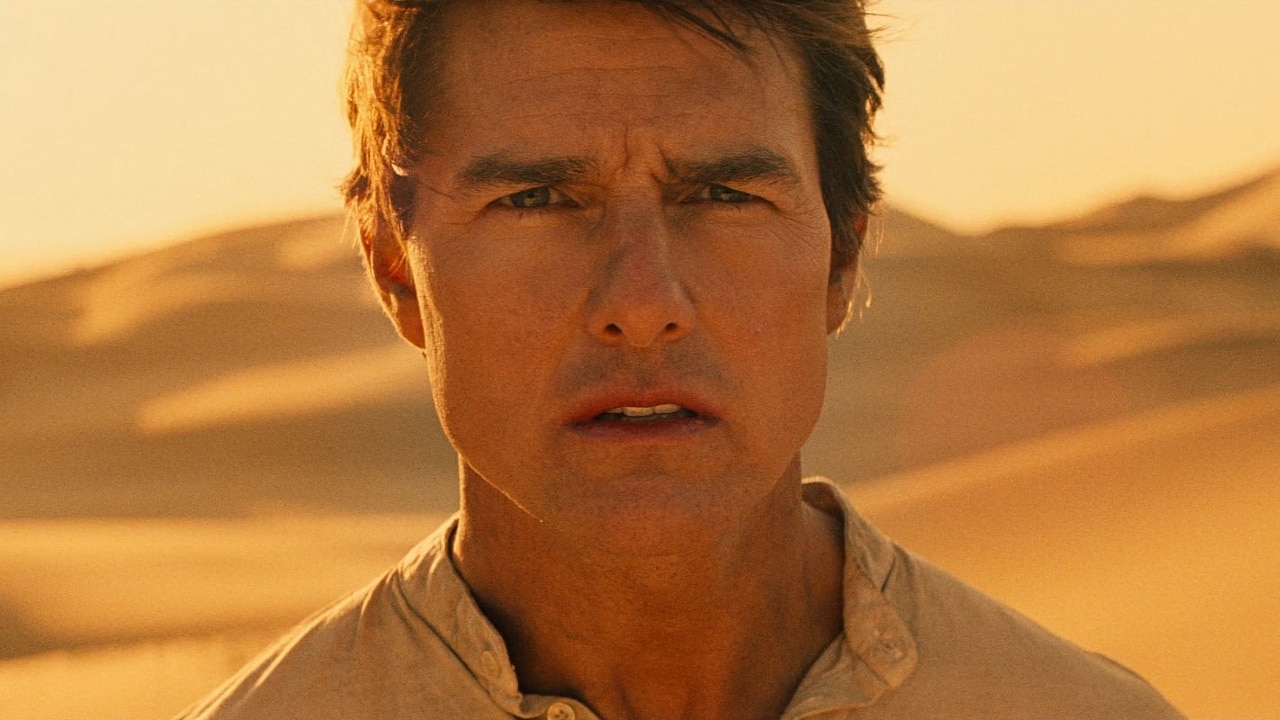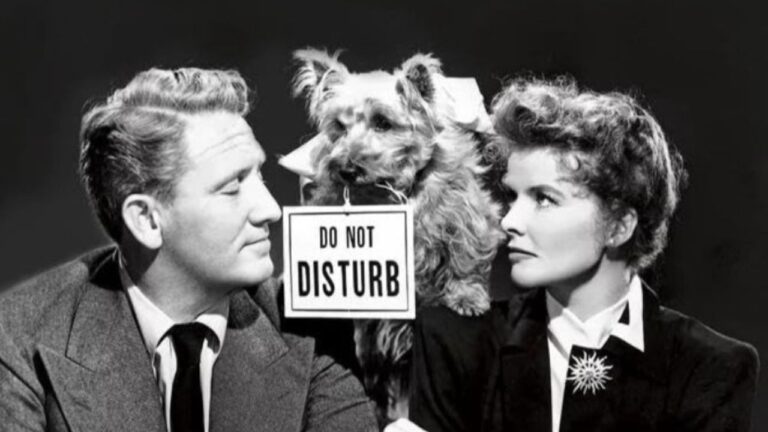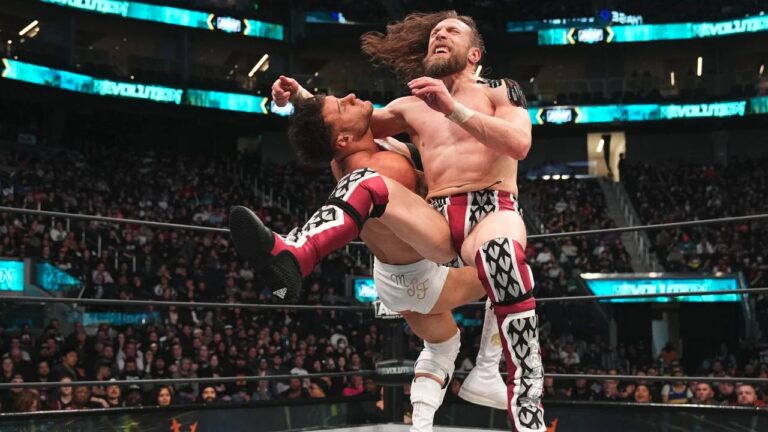These Extended Fictional Universes Fell Off Everyone’s Radar

When most people think of extended universes, they tend to think of the larger franchises that have expanded across movies, television series, comic books, or video games.
For some, this might mean the larger-than-life landscape of the MCU or DCEU. For others, it might relate more to sci-fi or fantasy epics like Star Wars or The Lord of the Rings series.
While fans continue to gravitate towards these respective intellectual properties, the pop culture landscape comes riddled with interconnected fictional universes, many of which remain far less well-known than their blockbuster counterparts.
1. The Classic Universal Monsters Universe

One of the earliest examples of a cinematic universe, horror fans across the globe bear a certain level of nostalgic fondness for Universal’s classic horror movies. Tossing together some of the company’s most well-known literary monsters, Universal managed to ask the fundamental questions on everyone’s minds in the 1930s — i.e., who might win in a fight: Dracula or Frankenstein, the Wolf Man or the Invisible Man, the Mummy or Abbott & Costello?
Though few of the resulting films ever captured the acclaim of the series’ earliest standalone movies, Universal’s Monsters Universe proved that expansive cinematic universes could exist in the first place, influencing countless extended universes that followed.
2. Quentin Tarantino’s Realer Than Real Universe

Fans familiar with Quentin Tarantino’s body of work might have realized by now that almost all of Tarantino’s movies fall into an intricate cinematic universe (or, rather, two cinematic universes). The first universe — known as the Realer Than Real Universe — features overarching links between each of Tarantino’s most well-known works, with subtle connections between Pulp Fiction, Reservoir Dogs, Inglourious Basterds, and True Romance, among others.
As an example, Michael Madsen’s sociopathic Vic Vega in Reservoir Dogs shares a fraternal bond with John Travolta’s juking-and-jiving Vincent Vega from Pulp Fiction. In addition, The Hateful Eight’s English Pete Hicox appears as the grandfather to Inglourious Basterds’ Lt. Archie Hicox. Inglourious Basterds’ Lt. Aldo Raine appears as the great grandfather to Brad Pitt’s couch potato Floyd in True Romance, and Reservoir Dogs’ Mr. White hints at a former partnership with True Romance’s Alabama.
On the flip side of that universe, Tarantino has also established his aptly-named Movie Universe, featuring works like Kill Bill and From Dusk Till Dawn that exist within the Realer Than Real Universe. As the director himself has explained it, “There’s the Realer Than Real Universe, all right, and all the characters inhabit that one. But then there’s this Movie Universe. And so From Dusk Till Dawn, Kill Bill, they all take place in this special Movie Universe. So basically when the characters of Reservoir Dogs or Pulp Fiction, when they go to the movies, Kill Bill is what they go to see.”
3. The View Askewniverse

Like his contemporary Quentin Tarantino, Kevin Smith has cultivated his own shared cinematic universe in which all of his movies take place. Over the years, Smith hasn’t shied away from including some not-so-subtle references to some of his previous movies in this self-contained universe (known as the View Askewniverse).
Perhaps the biggest linchpin of the View Askewniverse revolves around Jay and Silent Bob (Jason Mewes and Smith himself), a pair of shady New Jersey drug dealers who pop up in almost every one of Smith’s movies. Smith has also included cameos appearances in his Jay and Silent Bob movies, including appearances from Clerks’ Dante and Randal, Chasing Amy’s Holden and Alyssa, Mallrat’s Brodie Bruce, and Dogma’s Loki, among many others.
4. Kenneth Branagh’s Poirot Universe

Kenneth Branagh has made a career out of directing films based on cherished literary classics. Following in the footsteps of his previous Shakespeare adaptations, Branagh has set his sights on crafting films based around the work of Agatha Christie’s mustachioed Belgian detective, Hercule Poirot, in more recent years.
A gleaming new take on the whodunit murder mystery format, Branagh has released three different Poirot films so far, two of which adapt Christie’s most famous novels (Murder on the Orient Express and Death on the Nile). Having earned avid acclaim for his third and most recent entry in the series (A Haunting in Venice), fans can only wonder whether Branagh hopes to add to his Christie cinematic universe in the years ahead.
5. Robert Rodriguez’s Machete Universe

A crossover between the family-friendly Spy Kids movies and the hard-boiled Machete films never seemed like a combination audiences expected to see. Yet, at the end of the day, director Robert Rodriguez made sure to interweave these two franchises into one behemoth cinematic universe.
As viewers familiar with both series will know, Danny Trejo makes his debut in Spy Kids as Machete, the gadget-savvy older brother to Antonio Banderas’ Gregorio Cortez. After the conclusion of the original Spy Kids trilogy, Trejo’s character received his own spin-off series with the grittier exploitation films, Machete and Machete Kills (albeit with a somewhat middling response from audiences).
While Rodriguez has expressed hope of one day continuing Machete’s adventures, the mixed reception to Machete Kills has put these plans on hold for the foreseeable future.
6. The SlasherVerse

Dedicated horror viewers will know that the Friday the 13th and A Nightmare on Elm Street franchises have long since shared a narrative universe together, culminating in the ultimate slasher showdown between Freddy and Jason in 2003’s aptly named Freddy vs. Jason. What these same viewers might not know involves the fact that another fan-favorite horror series shares a connection to these iconic slasher franchises as well.
In Jason Goes to H-ll: The Final Friday, one of the main characters happens across a copy of the Necronomicon Ex-Mortis — the Book of the Dead that plays such a prominent role in Sam Raimi’s Evil Dead series. According to Jason Goes to H-ll director Adam Marcus, he considers this small reference to the Evil Dead franchise as a canonical explanation for Jason’s sudden transformation from a small boy into a fully-grown, immortal serial killer.
As Marcus explains it:
“[Pamela Voorhees] makes a deal with the devil by reading from the Necronomicon to bring back her son. This is why Jason isn’t Jason. He’s Jason plus the Evil Dead, and now I can believe that he can go from a little boy that lives in a lake to a full-grown man in a couple of months, to Zombie Jason, to never being able to kill this guy… So yes, in my opinion, Jason Voorhees is a Deadite. He’s one of the Evil Dead.”
7. The Elmore Leonard Universe

Aside from the aforementioned Realer Than Real Universe and his succinct Movie Universe, Quentin Tarantino has also dabbled in a third cinematic universe based on the work of Elmore Leonard. A pulp novelist whose stories have seen numerous adaptations over the years, two of the most well-known adaptations of Leonard’s book came with Tarantino’ Jackie Brown and Steven Soderbergh’s Out of Sight.
To further tie into their basis in Leonard’s bibliography, Jackie Brown and Out of Sight managed to include one character who appears from one film to the next. Introduced in Tarantino’s Jackie Brown, Michael Keaton’s mild-mannered A.T.F. agent Ray Nicolette later returns in Soderbergh’s Out of Sight, chasing after George Clooney’s runaway fugitive criminal. Though a mere cameo from Keaton, it almost makes us wonder if certain other Leonard adaptations also appear within this self-contained universe (like Justified or Get Shorty).
8. The Weyland-Yutani Universe

The Weyland-Yutani Universe might very well appear as one of the biggest blockbuster universes few people know about. Yes, we know that the Aliens and Predator series have seen several crossovers over the years, but to everyone’s surprise, another well-known sci-fi property also belongs to the Weyland-Yutani Universe, tying together two of Ridley Scott’s most well-known films.
In the 20th anniversary DVD release of Alien, viewers can cycle through some of the main character’s biographies, including relevant details about their age, hometown, and past work experiences. Under Dallas’s profile, audience members might notice that the doomed Nostromo captain once worked for the Tyrell Corporation — the same corporation that produced Replicants in 1982’s Blade Runner.
If viewers needed further proof of the link between Alien and Blade Runner, they can also look to Peter Weyland’s allusion to Blade Runner’s Eldon Tyrell in the DVD extras of Prometheus. Here, Weyland establishes his connection to a mentor and “long-departed competitor” who turned him onto the idea of artificially created robotic beings.
While this might seem like a circumstantial Easter egg, even the most skeptical viewers will have a hard time ignoring some of the extra’s more compelling references, including Weyland’s critique of his mentor’s God complex, asserting that he might have fared better if “[stuck] with simple robotics instead of those genetic abominations he enslaved and sold off-world.”
9. John Hughes’ Shermer Universe

Unlike Quentin Tarantino or Kevin Smith’s cinematic universes, the connections filmmaker John Hughes makes in his movies mostly exist in Hughes’ own imagination. However, Hughes still took the time to craft a meticulous world within the town boundaries of Shermer, Illinois — the fictional setting for many of Hughes’ movies, including Ferris Bueller’s Day Off, Sixteen Candles, The Breakfast Club, and Planes, Trains and Automobiles.
Based on Hughes’ hometown of Northbrook, Illinois, no characters from any one film go on to appear in another of Hughes’ works. According to the director, however, that doesn’t prevent their stories from taking place in the same locale.
As Hughes put it, “When I started making movies, I thought I would just invent a town where everything happened. Everybody, in all of my movies, is from Shermer, Illinois. Del Griffith from Planes, Trains & Automobiles lives two doors down from John Bender. Ferris Bueller knew Samantha Baker from Sixteen Candles. For 15 years, I’ve written my Shermer stories in prose, collecting its history.”
10. The Happy Madison Universe

If viewers paid close attention to Adam Sandler’s various Happy Madison-produced movies, they might notice certain recurring characters appear from one film to the next. As an example, the late great Carl Weathers’ seasoned pro golfer Chubbs Peterson in Happy Gilmore goes on to appear in 2006’s Little Nicky, having since become a dance instructor to his fellow angels in the great above.
The connections don’t stop there, either. Happy Gilmore’s vindictive assisted living orderly Hal (Ben Stiller) returns in 2020’s Hubie Halloween; Rob Schneider’s delivery boy, Nazo, in Big Daddy returns in 2002’s Mr. Deeds; and Allen Covert’s amnesiac Ten-Second Tom from 50 First Dates later pops up in 2014’s Blended. (We could keep going, but said connections might spiral into their own list if we didn’t stop now.)
11. The Dark Universe

In all fairness, Universal’s Dark Universe never actually got off the ground, ushering in a single franchise entry (2017’s The Mummy) before its almost immediate dissolution. However, The Mummy still worked hard to lay the seeds for this failed universe, introducing characters they hoped might appear in later spin-offs (namely Russell Crowe’s Dr. Jekyll/Mr. Hyde).
As part of its overall plans for the future, Universal had hoped to make contemporary remakes of beloved horror movies like The Bride of Frankenstein (starring Angelina Jolie) and The Invisible Man (starring Johnny Depp). Following the failures of The Mummy, Universal scrapped plans for any further entries into the Dark Universe, reworking The Invisible Man into its own self-contained film.
12. The District 9 Universe

Who might have thought that a failed Halo film could trigger the start of an entire sci-fi universe? Rebounding from Halo’s canceled production, director Neil Blomkamp used his leftover budget to pilot District 9, a brilliant sci-fi thriller with plenty of poignant topical themes (including discussions about systemic racism, corporate bureaucracy, and numerous parallels to South Africa’s troubling history of apartheid).
Following the success of District 9, Blomkamp returned with two more sci-fi films: the robot-oriented Chappie and the dystopian social thriller Elysium. What viewers might not realize the first time around is that all three of Blomkamp’s movies take place in the same shared universe. Tetravaal, the insidious robotics company that plays a key role in Chappie, links all three films together.
In District 9, viewers can spot a logo for the corporation’s biosecurity branch within the Multinational United headquarters. In Elysium, robot police officers that share a plain resemblance to Chappie’s titular character also pop up, subduing unruly humans on the ruins of Earth. As a result of these connections, viewers have long speculated the exact chronology of Blomkamp’s universe, hypothesizing that the order of films went: District 9, Chappie, Elysium.
13. The Original Marvel Universe

Nowadays, the prospect of a pre-MCU Marvel universe seems almost like a bizarre pipe dream, with little to no connections between 2000s-era film series like Spider-Man or X-Men. In its earliest inception, however, film producers had the rough idea of one day tying together their individual series into one collective universe.
For proof of this fact, just look at Spider-Man 2, which features one notable Easter egg alluding to a famous Marvel superhero. In this specific scene, J. Jonah Jameson and his staff pitch ideas for villain monikers to bestow on Otto Octavius. After Parker suggests the name “Doctor Strange,” an initially satisfied Jameson replies, “That’s pretty good — but it’s taken!”
While shooting 2002’s Spider-Man, director Sam Raimi had also planned to include Hugh Jackman in a cameo, reprising his role as Wolverine from 2000’s X-Men. When Jackman showed up to shoot his cameo, however, the production crew failed to locate the character’s costume, nixing any plans for Jackman’s rugged superhero interacting with Tobey Maguire’s plucky webslinger.
14. The Stephen King Universe

In theory, the Stephen King universe exists on paper more than it does on-screen. Yet even then, viewers might want to keep these literary connections in mind when enjoying the numerous adaptations of King’s work, further enriching their horror-centric viewing experience.
As expected, only dedicated fans of King’s work might spot these references, with many of them remaining known to voracious readers of King’s books. For example, several of King’s adaptations take place in the town of Derry, Maine — the fictional locale for It, 11.22.63, and Dreamcatcher. Eagle-eyed viewers can also spot a photo of The Shining’s Overlook Hotel in 2017’s The Dark Tower, with Jake Chambers (Tom Taylor) possessing a form of the shining (referred to in The Dark Tower as “the Touch”). Not only that, but the monsters depicted in The Mist originate from a dark, parallel universe traced back to The Dark Tower, which also might serve as the original home for It’s Pennywise, the shape-shifting demonic clown that feeds on children’s fear.
15. The Jaws Universe

With how downright awful anything past Jaws II so often seems, viewers have little reason to wonder why Universal’s Jaws series died a slow and painful death. Failing to live up to the popularity of Steven Spielberg’s original Jaws, each new Jaws sequel only delivered lesser and lesser thrills, growing more laughable by the time the series-killing Jaws: The Revenge rolled into theaters.
While it remains almost impossible to sit through The Revenge or its immediate predecessor in Jaws 3-D, movie fans might find it interesting to see a connection between the Jaws series and 2010’s over-the-top Piranha 3D. A loose remake of Joe Dante’s 1978 cult classic, Piranha 3D opens with a fisherman (Richard Dreyfuss) enjoying the tranquility of an open lake — only to wind up fish food once a swarm of prehistoric piranhas rises to the surface.
Decked out in his signature jean jacket and black beanie hat, Dreyfuss himself has revealed he portrayed an elderly Matt Hooper in Piranha 3D. (It seems that, while he could survive a great white, Hooper proved no match for the ravenous jaws of the Piranha’s animal antagonists.)
16. The Ghostbusters Universe

Yes, everyone knows about the main continuity of the Ghostbusters series, starting with the franchise’s initial 1984 entry and continuing up to its most recent sequel, Ghostbusters: The Frozen Empire. What some people might forget, however, involves the fact that Ghostbusters also connects to another family-friendly fantasy comedy series rooted in a supernatural premise.
In 1995’s Casper, a wealth-obsessed heiress (Cathy Moriarty) tries to drive out Casper and his three unruly uncles out of her deceased father’s decrepit mansion. In an effort to exorcize the ghosts from the property, the heiress winds up calling Ray Stantz, Dan Akyroyd’s enthusiastic paranormal expert from the Ghostbusters franchise. Believe it or not, Ghostbusters Ivan Reitman has stated that he considers this scene canon, meaning that Ghostbusters and Casper take place in the same cinematic universe.
17. The Men in Black Universe

Few buddy comedies surpass the utter originality of the Men in Black universe. A sci-fi series that leaned onto nationwide conspiracies about secret organizations and suit-clad espionage operatives, Men in Black released a string of films since the series began in 1997, each more lackluster than the last.
As with most sequels, none of the later entries in the series rivaled the acclaim of the original, resulting in three subpar follow-ups that left fans more than a little disappointed. Though film producers had planned to reboot the series with a crossover between MiB and 21 Jump Street (of all potential movies), nothing solid ever came to fruition, leaving the Men in Black universe in a state of limbo since 2019.
18. The Original Superman Universe

Before the MCU or DCEU dominated the superhero genre, audiences marveled at the heroic might of the Christoper Reeve-led Superman series, delighting at Reeve’s charismatic portrayal of the movie’s lead character. While most people tend to remember that Reeve’s movies received several sequels, those same fans might forget that the Superman films also kicked off its own short-lived interconnected universe.
Having made its successful debut with the initial two Superman movies, Superman’s producers decided to follow through with a spin-off film centered around Superman’s cousin, Kara Zor-El (Helen Slater), with 1984’ Supergirl. Decades later, the Superman series returned with the brief one-off film, Superman Returns, replacing Reeve with Brandon Routh. Since then, the series has found its way into the superhero series, Arrow, and its spin-off shows, The Flash, Legends of Tomorrow and Batwoman.
19. The Split Universe

Taking close to two decades to come to fruition, M. Night Shyamalan made his successful return to form with his franchise-building 2016 psychological horror epic, Split. Redeeming himself from the critical failures of the previous decade, Shyamalan revitalized his entire career based off of the success of Split, laying the groundwork for a narrative crossover audiences had never expected to see.
As a director known for his famous twist endings, Shyamalan used Split’s concluding chapter to tie the film’s story into the same narrative universe as Unbreakable, the director’s 2000 superhero film starring Bruce Willis and Samuel L. Jackson. While the third and final entry in the series (Glass) failed to live up to audiences’ high hopes, Willis’ sudden cameo at the end of Split nevertheless left audiences aghast back in the autumn of 2016, wondering what on earth might happen with the series’ next installment.
20. The DC Multiverse

Yes, as everyone knows, the DCEU weaved together the live-action DC adventures of Ben Affleck’s Batman, Gal Gadot’s Wonder Woman, Henry Cavill’s Superman, and Jason Momoa’s Aquaman. Yet with 2023’s The Flash, the DCEU found a way to introduce certain pre-existing DC creations like the vintage Batman series starring Adam West into its massive narrative universe.
Most obviously, The Flash managed to revive Michael Keaton’s older, more seasoned iteration of Batman from the Tim Burton films, allowing Keaton to return to the role for the first time in 30 years. In addition, The Flash also established the fact that several other continuities exist within its cinematic multiverse, including the Christopher Reeve Superman films, the unmade Nicolas Cage-led Superman film from Tim Burton, and George Clooney’s Batman from 1997’s Batman & Robin.





